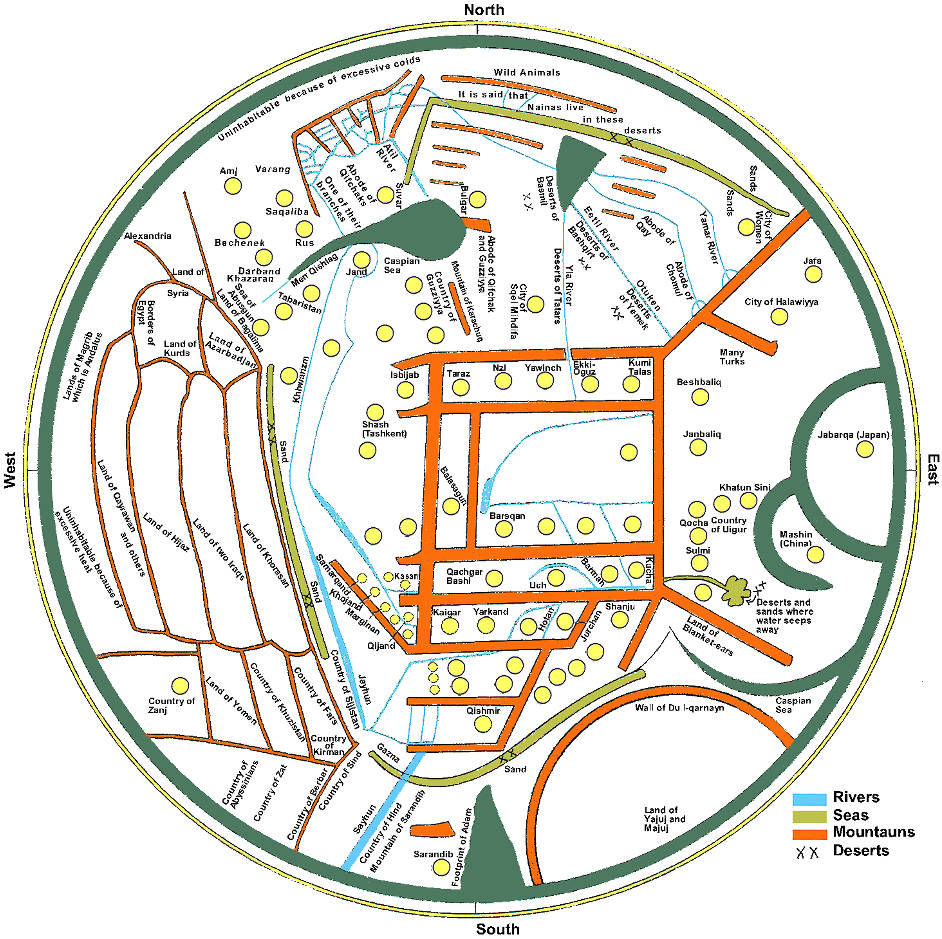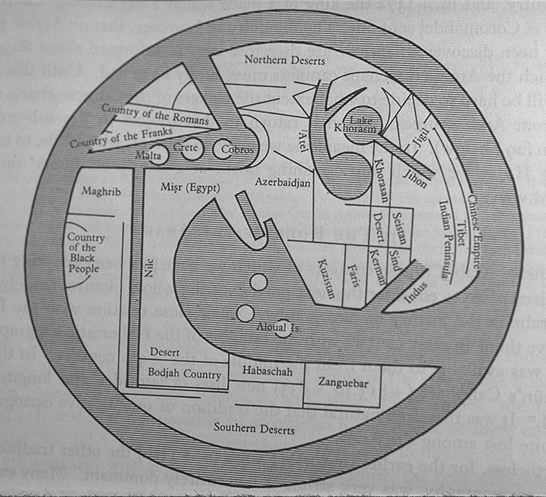Back
Map List
Roots
Writing
Language
Religion
Geography
Archeology
Coins
Wikipedia
Ethnonyms Sak and Kypsak
Scythians
Alans and Ases
Kipchaks
Avar Dateline
Besenyo Dateline
Bulgar Dateline
Huns Dateline
Karluk Dateline
Kimak Dateline
Kipchak Dateline
Kyrgyz Dateline
Sabir Dateline
Seyanto Dateline
Kashgari Map
INTRODUCTION
Even better, we have a testimony of Ibn Hawkal, a traveler in 943-969, at least 60 years before the arrival of Oguzes, his first-hand observation was that in the Caucasus 360 languages were spoken, with Azeri and Persian languages being used as Lingua Franca across the Caucasus (Surat al-Ardh "The face of the Earth", 977 AD). Not only do we have the name of the language as Azeri = Az-eri = Az People, but the name of the people who spoke it as their native language, Azeri = Az People. To think that Az People could assume their name from a Persian commander named Atropena would be preposterous. But that nonsense is propagated by the scholars, politicos, textbooks, and encyclopedias. For a Türkic language to be used as a Lingua Franca across the Caucasus, this language must have had deep roots, and the name Azeri in the form Az-Kishi or Az-Guzes = Az People (Assyrian Ishguza Scythians) certainly has deep roots in the Caucasus.
Even better, we have a testimony of al-Istakhri map, ca 934, that also shows a full-blown Azerbaijan a century prior to its official birth out of the loins of Oguzes (source http://www.columbia.edu/itc/mealac/pritchett/00maplinks/medieval/alistakhri/world934.jpg).
That the observation, that the ongoing genesis story is fishy and was propagated first of all by the contemporary Persian historiographers that reflect a political anxiety about a major population under their dominance, is not new. The translation of the Mahmud Kashgari Map of the World, that at least in the public domain was not done until the 21st c., is new and sheds additional light on the fishy story. Another necessary facet of the Persian historiographical jewel is a linguistic conversion. In that story, the S.Caucasus Ases adopted the Türkic language only after the 1030 AD, shedding their native Persian as dirty clothes, and putting a new ethnonym and new language like children wrapping themselves in new pink dress. The adoption of a new language went on like a Swiss cheese, the rainbow of the old languages in the Azeri territory remained untouched, with other native moms unwittingly propagating their multiple vernaculars into the next millennia, but the Azeri moms endevoured to teach their infants a new language of the Oguz conquerors, with immediate and splendid results. That linguistic miracle happened in spite of the Azeri language being a Lingua Franca across the Caucasus at least a century before the upcoming miracle, and was made even more miraculous by the kids mastering a foreign language from a different linguistic family without a tint of the Creole language phase, which for other normal humans lasts for centuries and leaves an indelible impact on the new language. No, these wunderkind Azeris mastered a brand new lexicon, phonology, morphology, syntaxis, and semantics all in one swoop, not unlike the Almighty creating out of dirt and water a man with a suspiciously Türkic name Adam ("man" in Türkic) with all biological attributes of 31 genes, billion-word genetical code, inherent evolutionary development history, amino- and other acids and proteins, and self-replicating materials and instructions. The only difference is that the Genesis story was written on palm leaves, and the Azeri genesis is promulgated using computer-driven technology.

Abu Ishaq Ibrahim ibn Muhammad al-Farisi al-Istakhri, ca. 977 CE
The world, centering on the Persian Gulf, a north-south schematic diagram
(a
version from ca. 934)

Notes